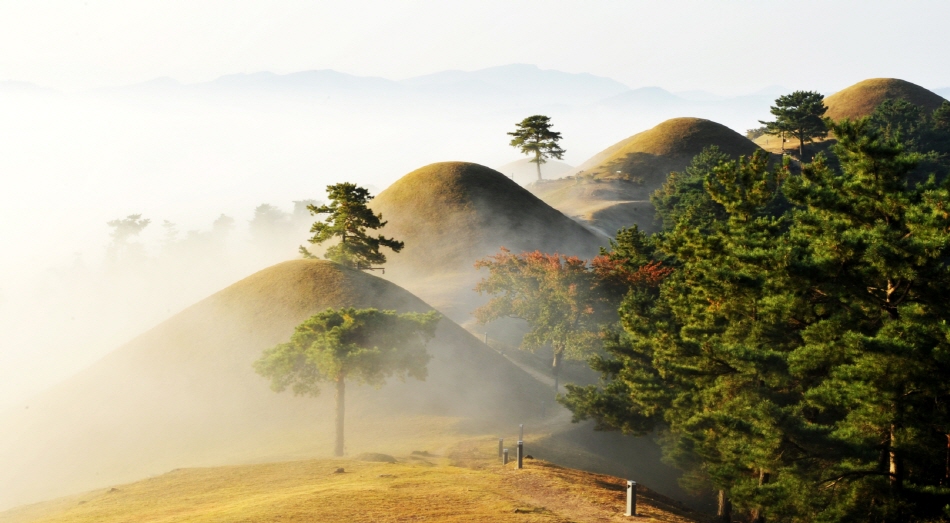Travel News
-
-
-
Gaya Tumuli Registered as UNESCO World Heritage
-
09/25/2023
951
-
-
-
Korea Tour
-
-

Gaya Tumuli (Credit: Korea Tourism Organization – Jang Wansu)
Gaya Tumuli, relics of Korea’s ancient Gaya Confederacy, has been registered as a UNESCO World Heritage. The tumuli were added to the list for inspection in 2013, and after great effort, were finally awarded with this great honor. The tumuli are Korea’s 16th World Heritage (14 Culture Heritages, 2 Natural Heritages).
The Gaya Tumuli were registered on September 17 during UNESCO’s Extended 45th session of the World Heritage Committee in Riyadh, Saudi Arabia. The committee stated the tumuli “attests to the distinctive Gaya political system in which affiliated polities were allowed to exist as autonomous political equals while maintaining the balance of power in the region by cooperating internally and taking part in exchanges with neighboring states.” The tumuli were judged to meet UNESCO’s criteria “to bear a unique or at least exceptional testimony to a cultural tradition or to a civilization which is living or which has disappeared.”
Korea’s 16th World Heritage, the Gaya Tumuli are seven ancient burial tomb sites from the Gaya Confederacy, which lasted AD 42-532, located in the southern end of the Korean Peninsula. The seven tomb sites include the Jisan-dong Tumuli in Goryeong, Daeseong-dong Tumuli in Gimhae, Marisan Tumuli in Haman, Gyo-dong and Songhyeon-dong Tumuli in Changnyeong, Songhak-dong Tumuli in Goseong, Okjeon Tumuli in Hapcheon, and Yugok-ri and Durak-ri Tumuli in Namwon.
In addition to the Gaya Tumuli, Korea’s other World Heritages include Seokguram Grotto and Bulguksa Temple; Haeinsa Temple Janggyeong Panjeon, the Depositories for the Tripitaka Koreana Woodblocks; Jongmyo Shrine; Changdeokgung Palace Complex; Hwaseong Fortress; Gochang, Hwasun and Ganghwa Dolmen Sites; Gyeongju Historic Areas; Royal Tombs of the Joseon Dynasty; Historic Villages of Korea: Hahoe and Yangdong; Namhansanseong; Baekje Historic Areas; Sansa, Buddhist Mountain Monasteries in Korea; and Seowon, Korean Neo-Confucian Academies as Cultural Heritages, along with Jeju Volcanic Island and Lava Tubes; and Getbol, Korean Tidal Flats as Natural Heritages.-




